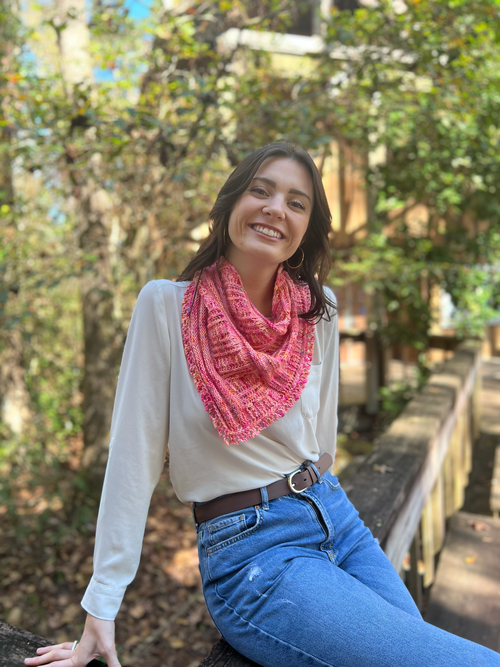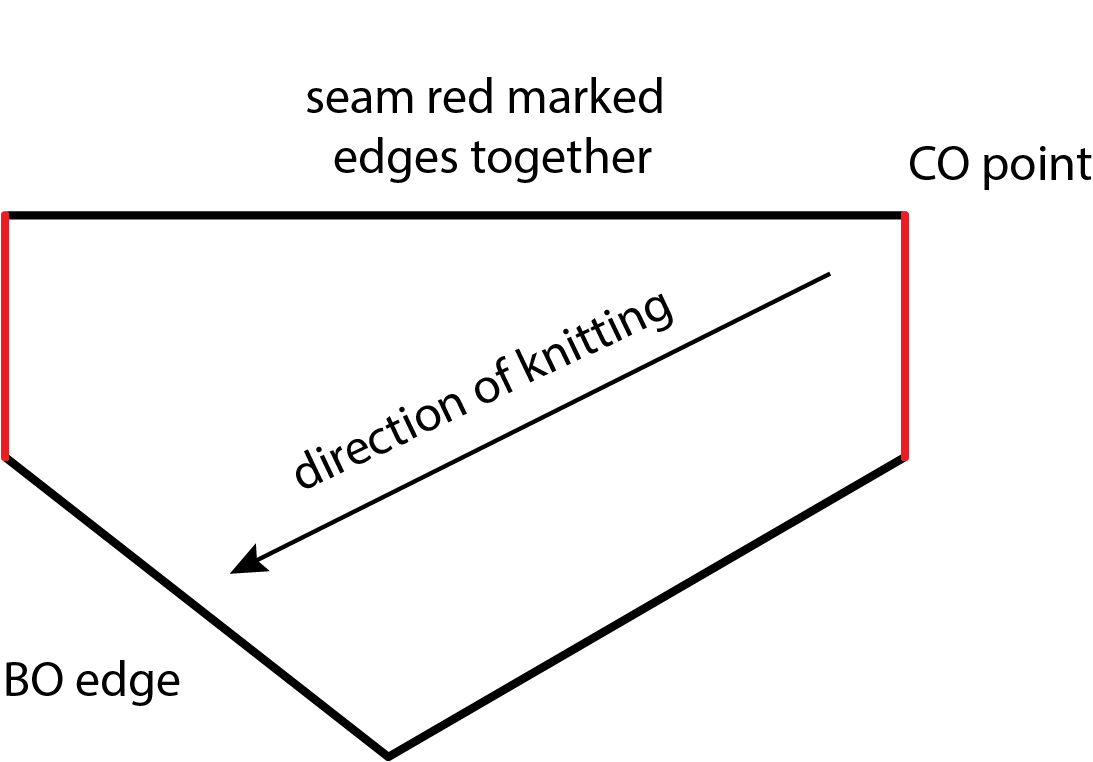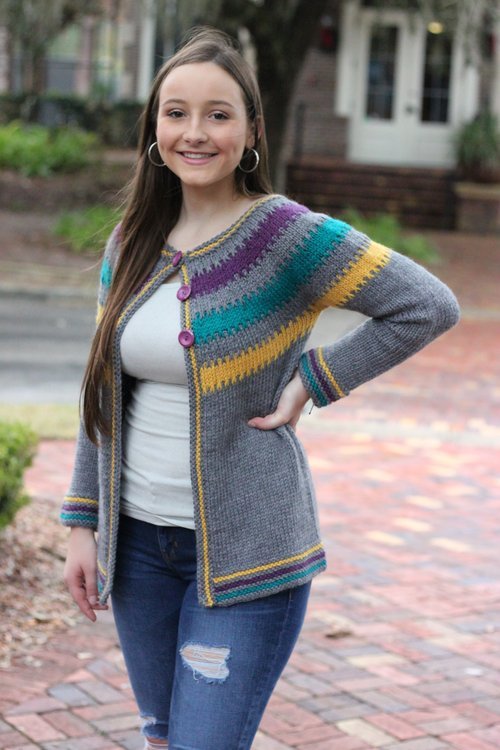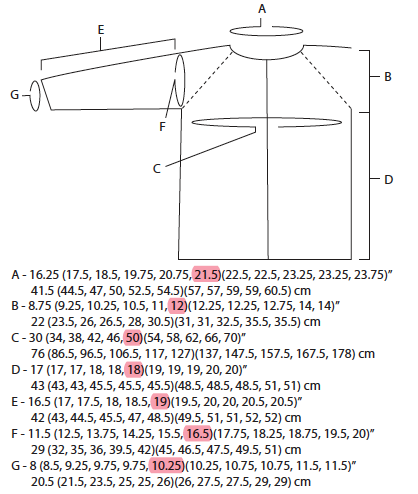Do you know what a schematic is in knitting and crochet patterns? Simply put it’s a diagram that helps you to understand how an item is constructed and/or tells you all the relevant measurements for said item. The easiest way to explain this is with some examples. This is my Clarksville Cowlette. Pretty huh? I think so! But looking at this on the model doesn’t tell you much about how it is knit or assembled.
Enter the humble schematic. This simple drawing tells you so much more about the project than the pictures alone can convey. The cowlette is knit flat and is asymmetrical and this tells you how it is worked, and the red outline shows you which bits are seamed together.
Now this particular schematic doesn’t have measurements listed because this is a one-size-fits-all sort of situation. All the measurements are listed in the pattern – this schematic just helps the knitter understand the construction and assembly.
Next up I have my Maude Cardigan. Maude is a top-down yoked cardigan that is worked flat for the body, with the sleeves worked in the round.
Maude has a lot of measurements and a lot of sizes – it goes from a 30” bust to a 70” bust. The old standard for schematics has always been listing all the measurements on the actual drawing, as close as possible to the portion being measured. But nowadays that just doesn’t work. With inclusive sizing we have way more sizes offered, and just the sheer amount of numbers makes it impossible to put them all ON the picture and have it be actually readable. So we separate things.
The drawing above shows you all the measurements being provided. The neck circumference (A), the upper arm circumference (F), the body length (D), etc. These are all to help the knitter choose which size to work. And all the measurements are provided in both inches and cm. So we have seven measurement sets, eleven sizes, and everything is in two units of measure. That’s 154 different measurements! That’s why the actual drawing only has letters. And then there will be a number box like this:
See how clean and easy to read? Another thing I always suggest for knitters when there are tons of sizes is to highlight the numbers for your size all the way through the pattern. So if I were knitting the 50” bust then I would highlight all the relevant numbers – like this:
And there you go – a good primer on the basics of schematics! Have any questions? Just get in touch – I’d love to hear from you.







0 Comments